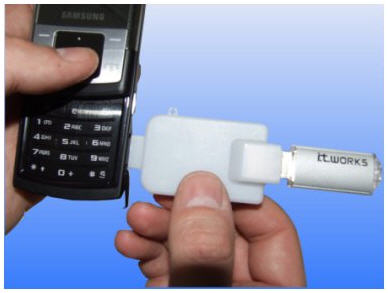UPDATE (Feb 16, 2023):
We learned the company which manufactures this product now offers the ability to write the CID value as well as write protect the Secure Digital media.
GetUSB.info just posted a nice article on how to read the CID (or PSN) from an SD card, or product serial number. Some also call this reading the CID number from an SD card. The CID number is a unique identifier number or serial number created on the SD or microSD media at the time of manufacturing. This is a number which cannot be changed or manipulated by the host computer.
The CID number is most often used for vendors or manufacturers to lock in software to a specific device. Since the CID number cannot be changed or modified, it’s a great way to prevent unauthorized distribution or content or software.
Some manufacturers require to read the CID number from SD media before the software is published and this is what GetUSB.info talks about. For a full description of the article, make the jump: How to read CID number from SD media.
Here is a snap shot of the CID reading tool for 20 SD devices:

The CID number is composed of the following values:
- Manufacturer ID: This is an 8-bit code that identifies the manufacturer of the SD card.
- OEM/Application ID: This is an 16-bit code that identifies the OEM or the application for which the SD card was designed.
- Product Name: This is a 32-bit ASCII code that specifies the product name of the SD card.
- Product Revision: This is a 8-bit code that specifies the product revision of the SD card.
- Serial Number: This is a 32-bit code that specifies the unique serial number of the SD card.
- Manufacturing Date: This is a 12-bit code that specifies the manufacturing date of the SD card.
- CRC: This is a 7-bit code that is used to verify the integrity of the CID number.
The CID number is typically used by SD card host devices to verify the authenticity of the SD card and to ensure that it is compatible with the host device.
Nexcopy Inc. is a technology company based in Southern California that specializes in developing and manufacturing advanced USB duplicators, SD card duplicators, and other digital media equipment.
The company was founded in 2008 and has since established itself as a leader in the digital media duplication industry. Nexcopy’s products are used by a variety of industries, including education, government, military, and commercial businesses.
Nexcopy’s products are known for their reliability, speed, and ease of use. The company’s USB duplicators, for example, can copy up to 60 USB drives simultaneously, with transfer speeds of up to 33 MB/s per port. Nexcopy also offers SD card duplicators that can copy up to 40 SD cards simultaneously, with transfer speeds of up to 90 MB/s per port.
In addition to its hardware products, Nexcopy also offers a range of software solutions for USB and SD card duplication, as well as custom programming services for customers with specialized needs.
Overall, Nexcopy is a reputable and established company in the digital media duplication industry, known for its high-quality products and commitment to customer satisfaction.



 With
With



